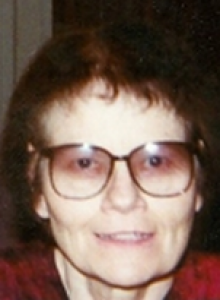By Storee Powell
June 7, 2011
Snoezelen can be costly these days, up to $5,000. And that doesn’t mean taking an expensive nap.
Snoezelen is a multi-sensory environment therapy for people with developmental disabilities created in the Netherlands. The room or wall is specially designed to deliver stimuli to various senses using lighting effects, color, sounds, music, and even scents.
Cache Valley-native, Julia Lyman, the mother of 16-year-old Haley, has never been able to get a diagnosis for her daughter’s disability.
 |
| Julia Lyman (right) with her 16-year-old daughter Haley. |
“We don’t know what she has; it is just kind of a big question. She does have significant delays and she’s very sensory oriented,” Lyman said. “She has to be twisting or pulling or something, and she doesn’t get enough of it from her everyday environment. She is starving for sensory, and trying to give her something to do has been really hard,” Lyman said.
Most of the time, activities last ten seconds for Haley, her mother said, and then she throws it or gets bored. Lyman learned of Snoezelen therapy from a friend who is an occupational therapist aid doing work at Logan’s Sunshine Terrace rehabilitation center, where a wall is patterned after Snoezelen products for Alzheimer’s patients.
“We went and saw it and Haley loved it. She could go from activity to activity to activity and it was things she liked to do,” Lyman said. “We and thought it would be perfect for Haley, but we couldn’t afford to order something that was $5,000 and wasn’t 100 percent custom to Haley’s needs,” Lyman said.
The solution was much closer than a product bought out of a catalog from Europe. Lyman, who works in the Special Education department at Utah State University, remembered taking peer tutors on tours to the University’s Center for Persons with Disabilities where they saw the Assistive Technology Lab.
The lab, located in the Janet Quinney Lawson building on the USU campus, is a part of the non-profit Utah Assistive Technology Program. The lab houses a state-of-the-art computer lab and fabricating shop. Individuals can test various software and hardware devices or find assistance to design, fabricate, modify or repair AT equipment to enable a person to be more independent.
Lyman approached the AT lab to see if they’d build a stimulation wall like the one they built for Sunshine Terrace.
“They said they’d love to do it, and it would be customized just for Haley,” Lyman said. “And it was so affordable at $150.”
 |
Haley Lyman plays with her stimulation
wall in her room built by the AT Lab. |
The wall took about nine months from beginning to end so that it was made perfectly for Haley including the size and activities.
“She’s very destructive so it had to be made out of super human strength, but I haven’t seen anything as Haley proof as this wall. They did so great,” Lyman said. “This wall has been a wonderful place for her to go and hang out and get the sensory needs she has.”
The wall is made out of everyday household things like light switches, a paint roller and bungee cords. That’s a big deal to Haley, Lyman said, because she’d rather play with normal things than things that are structured.
Clarissa Barnhill, the AT Lab coordinator, said the client only pays for the basic materials needed to build the stimulation device.
“We put in all the labor and design it and build it, making it very affordable,” Barnhill said.
In order to design the stimulation device, Barnhill said she with the client to learn of their likes and dislikes as well as things they may need to work on. Then she brainstorms ideas with co-workers and looks in AT magazines to see what other people have done to develop stimulation for certain needs.
“Not only do these devices stimulate senses providing therapy,” Barnhill said, “But they can develop someone’s fine motor skills helping them to do things better such as write. They also help with larger skills requiring muscle stimulation which can translate into someone being able to feed themselves.”
Age doesn’t matter when it comes to stimulation devices, Barnhill said, but rather the need of the individual. Currently, Barnhill is working on a vanity stimulation device for Sunshine Terrace’s Alzheimer’s unit. The vanity will include personal grooming materials such as towels and brushes to help patient’s losing memories recall how to do things.
 |
A latch stimulation board made in the AT Lab by Mike Moreno
will go to the Sunshine Terrace rehabilitation center. |
Also in the works is a recreated car dashboard that will include a faux radio, AC control, and blinker.
“These devices are for older people who still have a lot of memory, but they’re cognitively digressing so this is something that hopefully they will be able to use to stimulate those memories of how to do everyday tasks,” Barnhill said.
The stimulation walls for Haley and Sunshine Terrace have been such a success, one is being made for the Bear River Activity and Skill Center (BRASC) so more people can access it. BRASC is located at 809 N. 800 East in Logan (http://www.uacs.org/providers/bear.php). “We see a problem, someone can’t do something, and we help them figure out how to do it, and that’s the best,” Barnhill said. “Everybody’s desire is to be independent, and we get to help people do that by being creative.”







